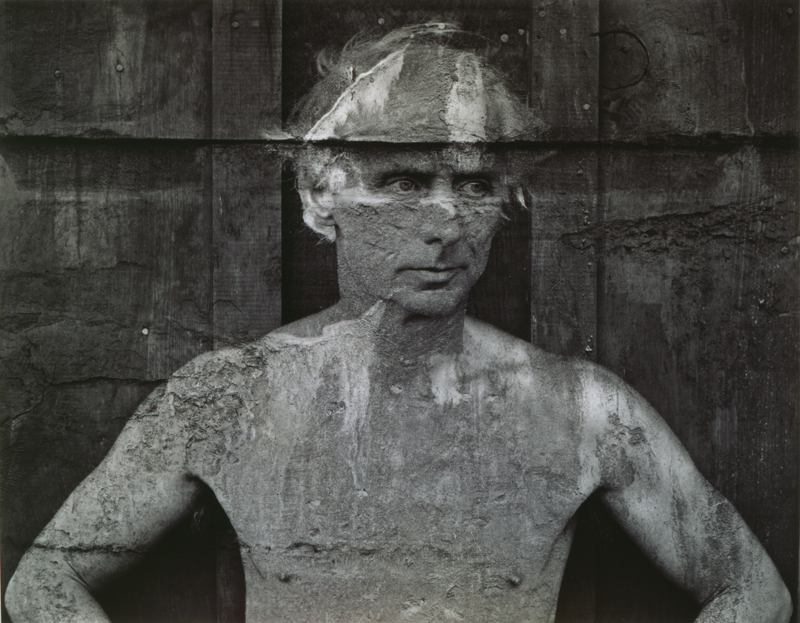by Andrea Rosen, Curator of Under the Surface.
In Frederick Sommer’s portrait of the surrealist painter Max Ernst, the subject both emerges from and is fused with the textured background, in ways that recall some of Ernst’s own techniques, such as collage and frottage (a rubbing over a textured surface). Sommer achieved this effect through the simultaneous printing of two different negatives: one, a portrait of Ernst in front of a weathered wood cabin; the other, a picture of a stained and corroded concrete wall. Sommer had been dissatisfied with each image individually and had forgotten them. When he by chance picked up the two negatives together, this iconic portrait emerged. Born in Italy and raised in Brazil, Sommer settled in Arizona in 1935 to soothe his tuberculosis. He and his wife became close with Ernst when he and fellow surrealist painter Dorothea Tanning moved there in 1946.
Image details:
Frederick Sommer (American, 1905–1999)
Max Ernst, 1946, 1946
gelatin silver print
Museum Purchase, Gridley W. Tarbell II Fund 1997.4
© Frederick & Frances Sommer Foundation
